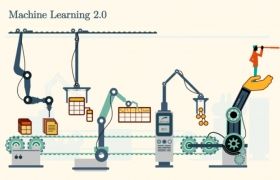Today, when an enterprise wants to use machine learning to solve a problem, they have to call in the cavalry. Even a simple problem requires multiple data scientists, machine learning experts, and domain experts to come together to agree on priorities and exchange data and information.
This process is often inefficient, and it takes months to get results. It also only solves the problem immediate at hand. The next time something comes up, the enterprise has to do the same thing all over again.
One group of MIT researchers wondered, "What if we tried another strategy? What if we created automation tools that enable the subject matter experts to use ML, in order to solve these problems themselves?"
For the past five years, Kalyan Veeramachaneni, a principal research scientist at MIT’s Laboratory for Information and Decision Systems, along with Max Kanter and Ben Schreck who began working with Veeramachaneni as MIT students and later co-founded machine learning startup Feature Labs, has been designing a rigorous paradigm for applied machine learning.
The team first divided the process into a discrete set of steps. For instance, one step involved searching for buried patterns with predictive power, known as “feature engineering.” Another is called "model selection," in which the best modeling technique is chosen from the many available options. They then automated these steps, releasing open-source tools to help domain experts efficiently complete them.
Read more at: Massachusetts Institute of Technology
Image Courtesy of the Laboratory for Information and Decision Systems


